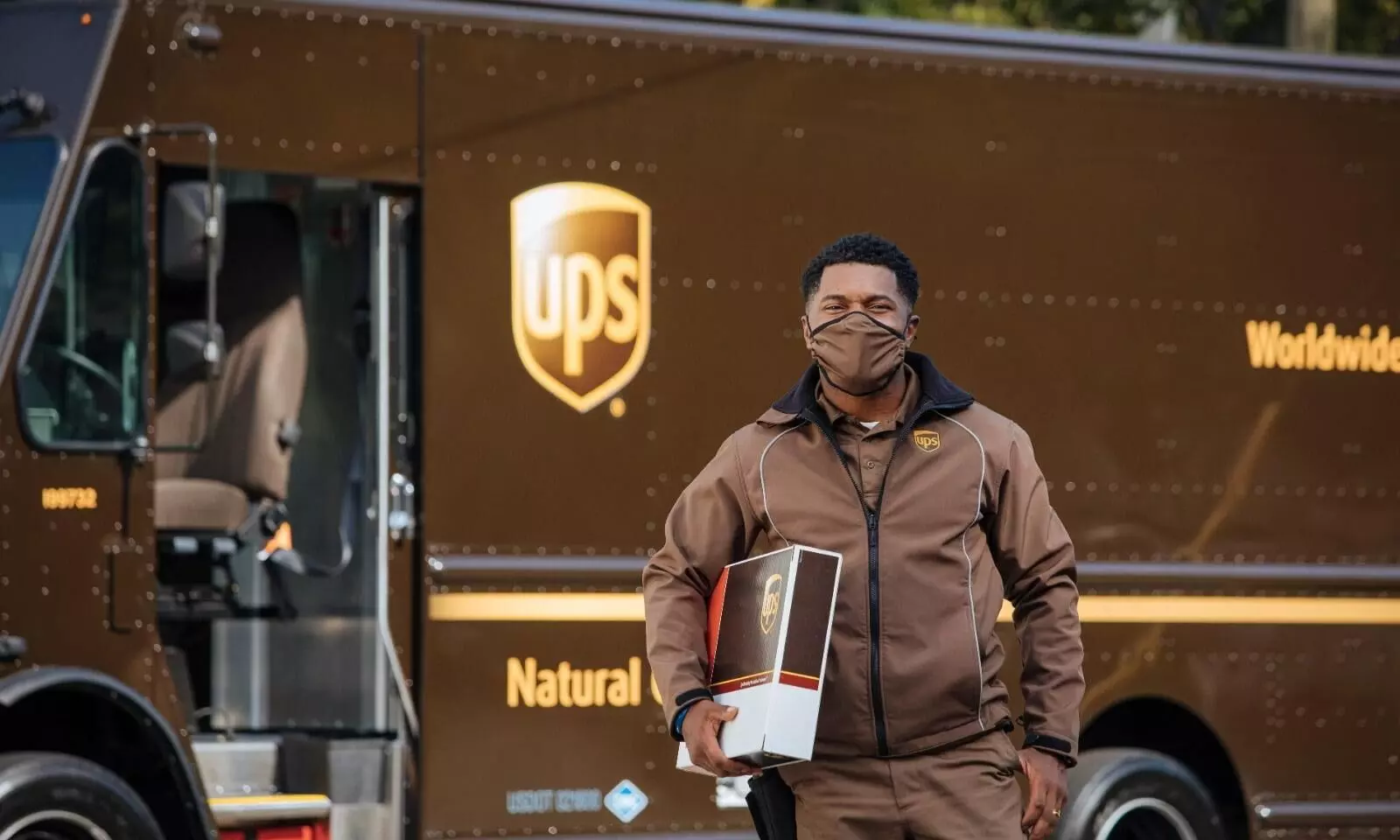
UPS to reduce 12,000 jobs, explore options for trucking biz Coyote
Bold moves to right size our company for the future and to focus on the key enablers of growth: Carol Tome, CEO, UPS

UPS is planning to reduce 12,000 jobs, and save around $1 billion through 2024 with “new ways of working and calling this Fit to Serve,” according to Carol Tome, Chief Executive Officer, UPS.
“We've decided to take some bold moves to right size our company for the future and to focus on the key enablers of growth,” Tome said during the analysts' meeting after the announcement of Q4 and FY2023 results.
UPS reported a 27 percent decline in adjusted operating profit at $2.8 billion for the fourth quarter ended December 31, 2023 on lower revenues in both the domestic and the international segments. Consolidated revenue was down eight percent at $24.9 billion and adjusted earnings per share (EPS) dropped 32 percent to $2.47.
“So, today, we are announcing two actions. First, we plan to explore strategic alternatives for our truckload brokerage business known as Coyote. Coyote is part of the supply chain solution and is a business that is highly cyclical with considerable earnings volatility.
“When we acquired Coyote in 2015, the revenues in the previous year for Coyote were $2.1 billion. During Covid, Coyote peaked up to over $4 billion in revenue. Well, it's come way down since then.
“In fact, if you look at our supply chain solutions business, it was down $3 billion year on year, which is a third of the overall company decline. Within that $3 billion, Coyote made up 38 percent of the decline for the year and 48 percent of the decline for the fourth quarter. So, you can see the volatility in the revenue line. And then, we've got a business that has a very low margin.
“So, if you've got kind of volatility on the revenue line, you're going to have even more volatility on the earnings line. So, we're like, gosh, is there another way to skin this cat? Can we think about an alternative that continues to allow us to provide the service but without all the overhead? Or, perhaps, this business is worth more to someone else than it is to us. We don't know. We don't know the outcome of our alternative work.
“Second, we are going to fit our organisation to our strategy and align our resources against what's wildly important. This will result in a workforce reduction of approximately 12,000 positions and around $1 billion in cost-out this year. Here, we've identified new ways of working and are calling this Fit to Serve.”
“Jobs are not coming back”
Seventy-five percent of the 12,000 job reductions will come in the first half, which will drive the $1 billion in 2024 calendar year, adds Brian Newman, Chief Financial Officer, UPS. “In terms of the timing and announcement, it'll be back-end weighted. The thing I'd like to point out, it's a change in the way we work. So, as volume returns to the system, we don't expect these jobs to come back. It's changing the effective way that we operate.”
Tome adds: “We have about 495,000 UPSers around the world. We have about 85,000 upstairs who are management, and this can be full-time and part-time management. The targeted headcount falls really within that group as well as some contractors that will be leaving us.”
Project Brown to drive volumes
UPS is projecting Project Brown as their new way of going after business. Tome says: “First of all, we looked at ourselves and said," What's getting in the way of speed?” Because it was taking us too long to respond to our customer.
“And we found that we hadn't really declared service level agreements among the various groups that participated in this exercise of providing offers to our customers. So, we've shortened up the time to respond. And that's important, and that's going to be with us now forever. I can make that real for you.
“Outside of the United States, it used to take 22 days. We dropped it to six days. We're now at two days. That's the best in class, and we've made similar improvements in the United States.”
Air an important component
The addressable market in the United States, it's a little over 50 million, 52 million packages a day, adds Tome. “So, there's plenty of addressable markets for us to go to and plenty of markets for us to get outside of the United States because we are under penetrated in so many areas. One reason I called out our new air hub in the Hong Kong International Airport is that the Greater China Bay area is an unbelievable economic power base, the 13th largest economy in the world. Thirty-seven percent of all China exports go through that airport.
“And today, we have small, way over-capacity hubs and buildings that are inefficient with lease rates that are sky-high. So, we are building a 20,000 square metre facility. It will make us the second-largest air hub in that important part of the market. So, expect to see a lot of growth coming off of that over time.”
UPS has also picked up two freighters (747-8F) through Qatar, adds Newman. “And really, it's part of a broader airline strategy to retire some of the MD-11s in terms of efficiency and sustainability.”
2024 outlook
In 2024, the small package market in the U.S., excluding Amazon, is expected to grow by less than one percent, according to Tome. “And projected market growth rates for the rest of our business segments suggest some improvement but not until the latter part of the year. In building our 2024 financial targets, we anchored the low end of our guidance on market growth and, for the high end of our guidance, included growth we should experience if we capture market share.
“In 2024, we expect to generate consolidated revenue ranging from approximately $92 billion to $94.5 billion and a consolidated operating margin ranging from approximately 10- 10.6 percent. Given the nuances of our new labour contract, there will be stark contrast between our first-half and our second-half performance. First-half earnings will be compressed, and second-half earnings will expand. In both the low and high end of our guidance range, we expect to exit the year with a U.S. operating margin of 10 percent.”


